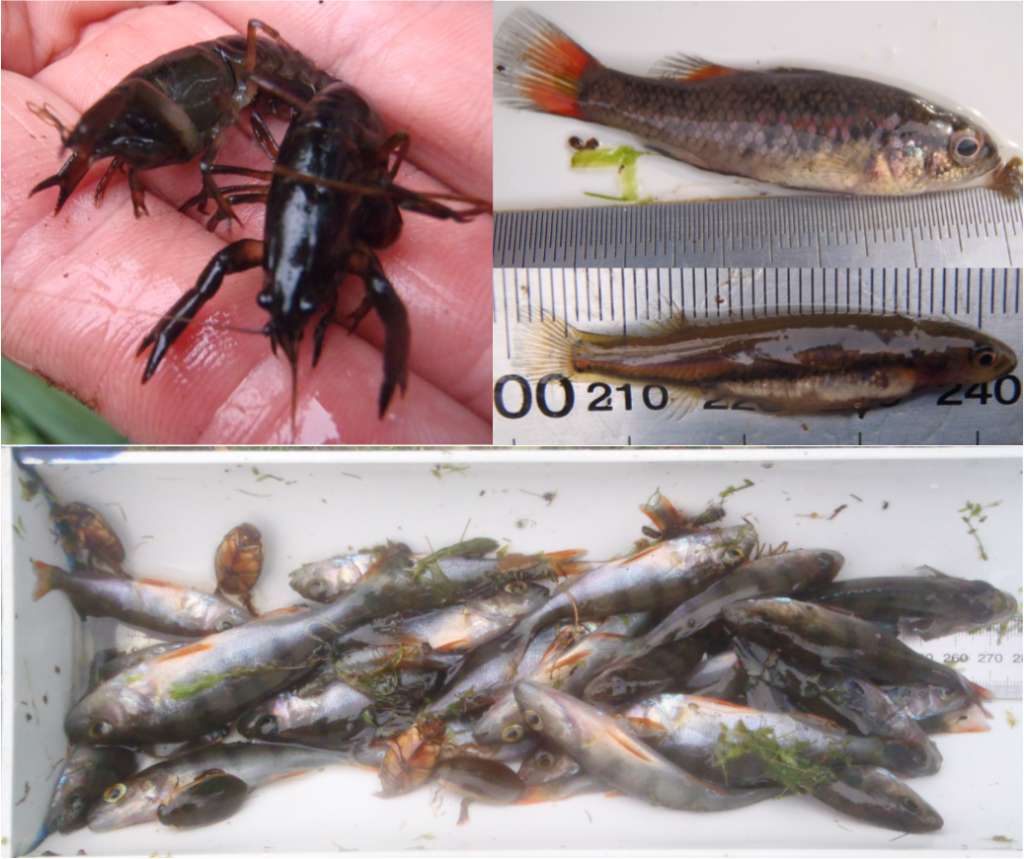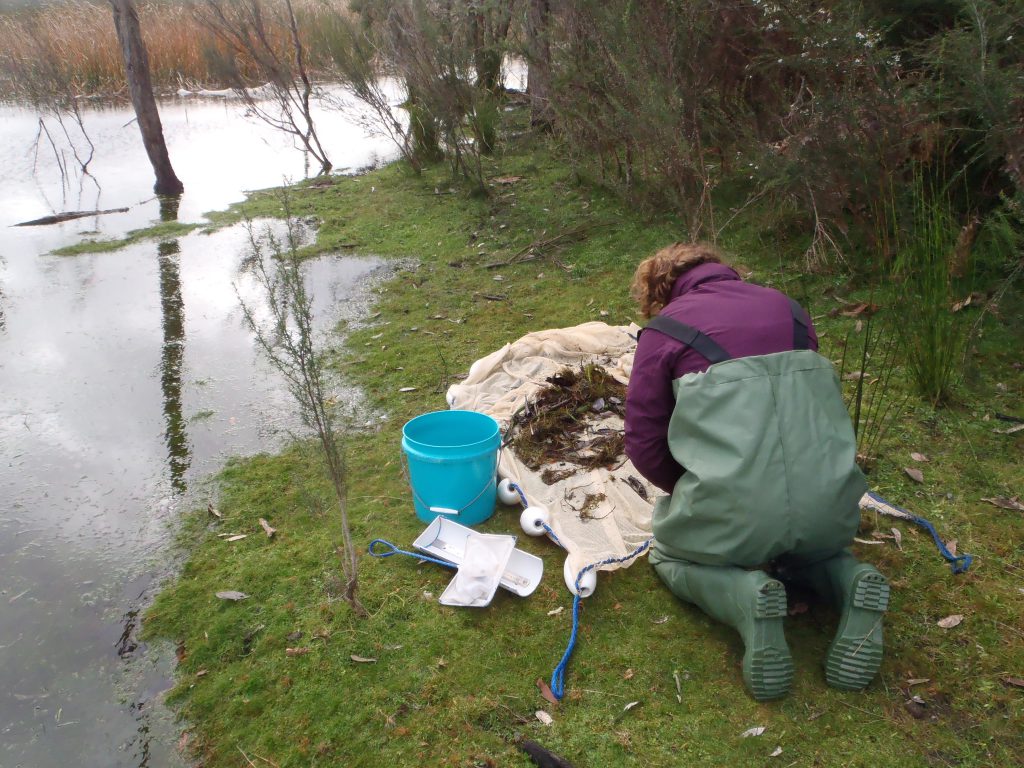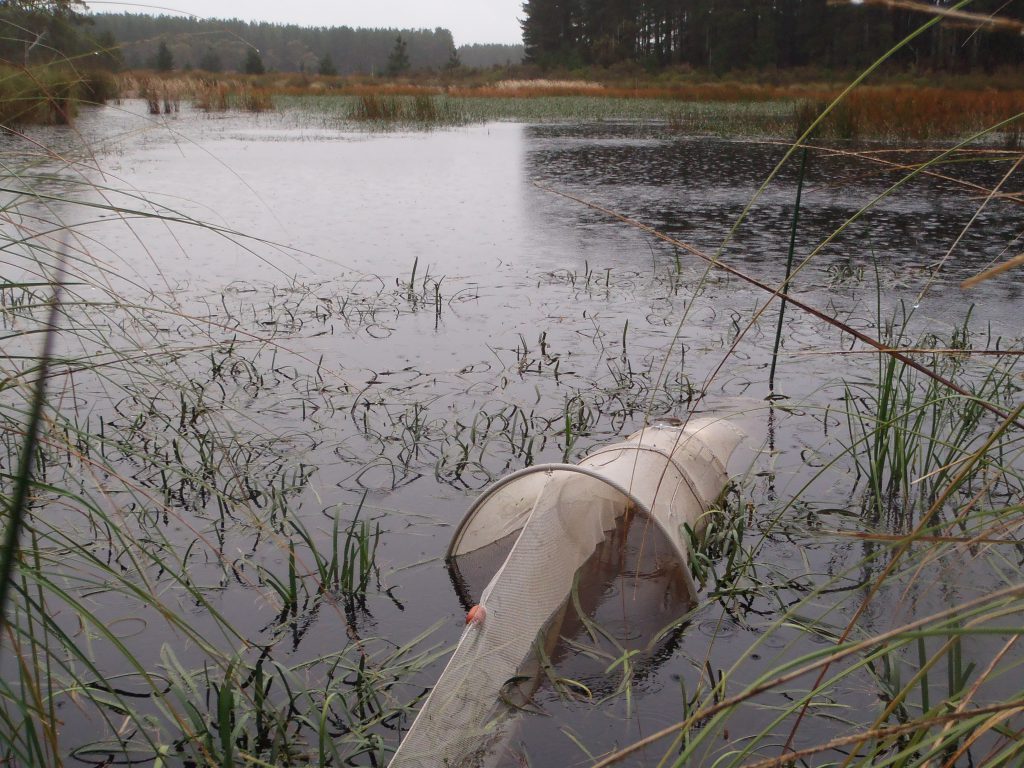Wetland surveys in western Victoria turn up two threatened species!
A few weeks back, Lachie, myself and NGT intern Alice Glare undertook some aquatic surveys in a couple of freshwater wetlands near Dartmoor. Overnight fyke netting and seine netting was used to assess the current status of fish communities in Mill Swamp, Burgess Swamp and two wetlands within Yakkum Downs’s property. The aquatic surveys formed part of broader projects, to restore the natural assets of these wetland systems through hydrological restoration, weed control and revegetation – thanks to the funding support of the Victorian Government.
At Mill Swamp, located within Wilkin Flora and Fauna Reserve, recent works to build up an access track have been completed to prevent further erosion and lowering of the wetlands natural sill. Unfortunately, large numbers of the introduced Redfin Perch (Perca fluviatilis) were detected, no doubt making it difficult for other smaller natives to persist. However, a small number of Southern Pygmy Perch were also recorded which was a positive result.
Burgess Swamp, is a freshwater wetland located within a Wildlife Reserve north of Dartmoor. While drained historically, works to block the outlet were completed some time ago, so our recent on-ground works at the site aimed to complement these previous works through control of introduced pines – the major weed threat at the wetland. Fish surveys found large numbers of the nationally threatened Little Galaxias (Galaxiella toourtkoourt), which was the only species detected. Their ability to aestivate and survive for short periods of time without surface water, allows the species to thrive in shallow ephemeral wetland such as Burgess Swamp. It was great to find another hot spot for the species in western Victoria!
Yakkum Downs, is a forestry property which features a series of high value freshwater wetlands, some of which have undergone recent hydrological restoration. Aquatic surveys detected a single Little Galaxias at one wetland, while considerable numbers of another threatened species, the Western Swamp Crayfish (Gramastacus insolitus) were recorded at both wetlands. This very small crayfish (typically <30-35 mm in total length) have a restricted distribution in western Victoria but are presumed to have been far more widespread prior to drainage. Increasing the duration and extent of inundation in these wetlands systems is therefore a key action to support the recovery of this crayfish species.

It was great to collect some key insight into the aquatic values of these hidden away wetland gems.


